How to Get Deeper Insights on Your Website Visitors Using the Facebook Pixel

A lot of people visit your website. But do you have a clear idea about who they are and what they do? In this article you will learn how to use Facebook to get some very important and interesting information on your visitors that is not available from other sources.

In general, we can’t have much information about our visitors because the visitors do not sign up on our website. Even if they become our users, they are not going to give us a lot of information.
If you have a Google Analytics code installed on your website, you can measure the demographics to some extent such as visitor’s location, gender and age. But Google has limited info. With Google+ they have more info but still they don’t know our educational level or marital status.
Facebook has more information compared to Google. Facebook knows where visitors are from, their age, gender, marital status, educational qualification and more! That’s because we happily share all that info on Facebook without a second thought.
Unfortunately Facebook doesn’t provide a tool like Google analytics for marketers and webmasters. But there is a work around!
You have to open a Facebook Ads account and with Facebook Pixel & Custom Audiences, you can get all the information that you could possibly get about your visitors.
The Facebook Pixel & Custom Audiences
Deploy a Facebook Pixel on your website and Facebook will start tagging all the users who visit your website, while they are logged into Facebook.
In my experience, 80% of my website visitors are logged into Facebook using the same browser. So Facebook tracks that this user has visited my blog! Facebook also tracks the pages they have visited (this helps in creating custom conversions).
If you haven’t setup a custom audience for your website visitors yet, do it immediately. The earlier you do this, the more data you will have. Learn how to setup Custom Audiences and Lookalike audiences in this article.
Even if you have not setup any ads, the Facebook Pixel will start collecting all the data about your users. You just need a Facebook Ads account.
Once you have installed the Facebook Pixel on your site, wait for a week or two. If you don’t get much traffic to your website, wait for a month to let Facebook collect the data.
Once you have let Facebook tag enough users (at least 1,000) you can start getting some interesting insights. To find out the demographics of your visitors, open your ads manager and click on Audience Insights.
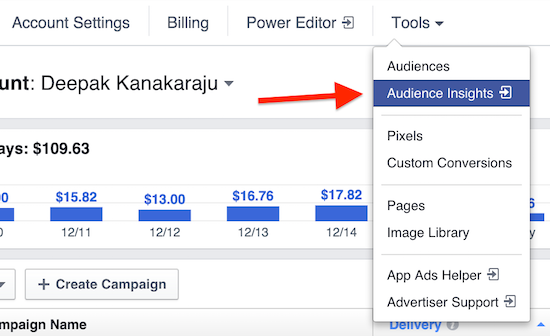
Select Custom Audience in the next step.
This allows you to have insights on your own custom audience.
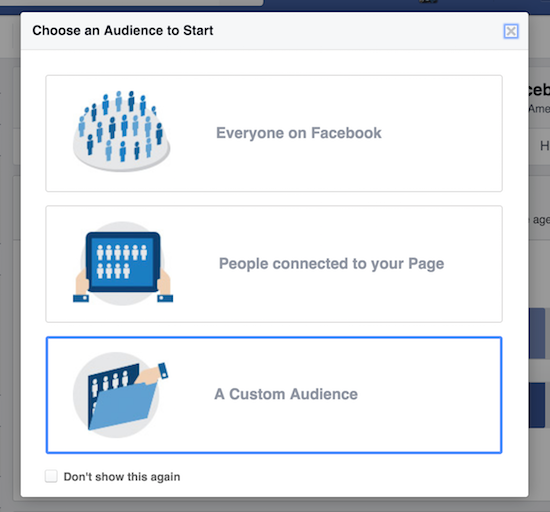
By default USA will be selected as the country. Remove it or change it to the country you want to track.
In general, if you want an overview of your entire audience, you should not select any country.
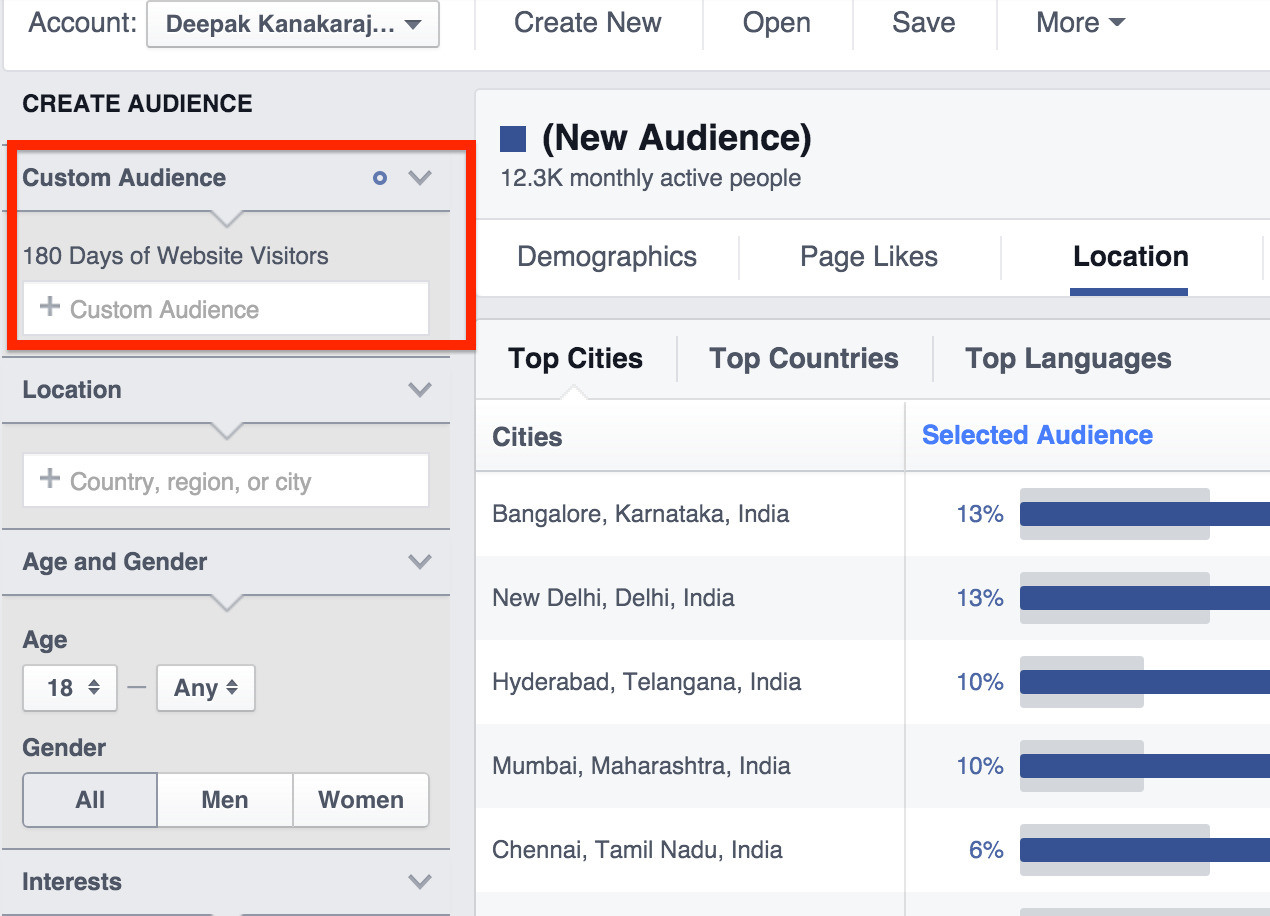
Here you can see that I have selected 180 days of website visitors as my custom audience. This is a custom audience that I have created around a few months back.
Note that Facebook “expires” users in your audience after 180 days. So 6 months is the maximum that you can track visitors on Facebook.
Here you can see the top cities that people visit my website from. This is marginally different from my Google analytics data. I would like to believe that Facebook is more accurate because FB collects more data about their users, obviously.
I can also get the age and gender split from audience insights.

And some information that Google analytics can never give me even if they wanted to!
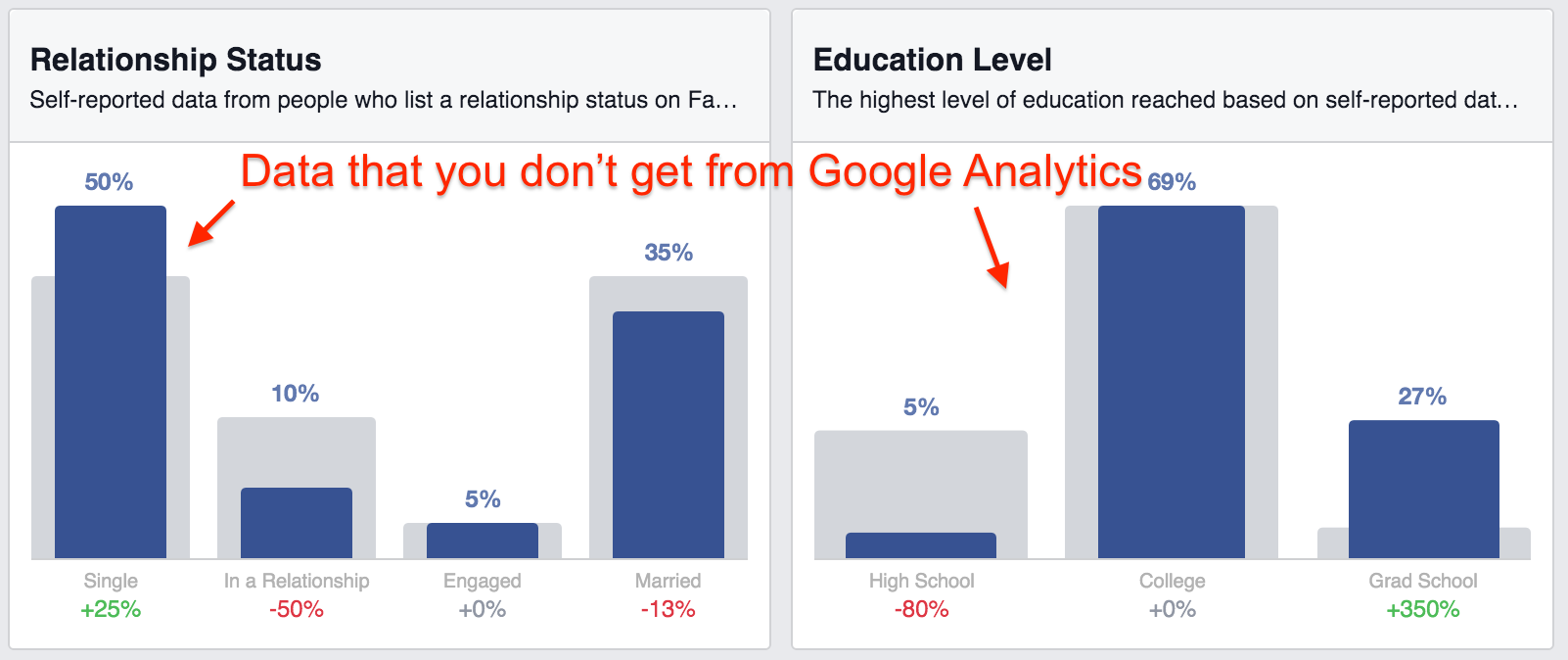
35% of my website visitors are married and 50% are single! This data is definitely going to have some influence on my ad copies 🙂
Device Usage of My Visitors
The device details also helps a lot. Only 12% of the users use Facebook only on desktop. 86% use it on both alternatively.
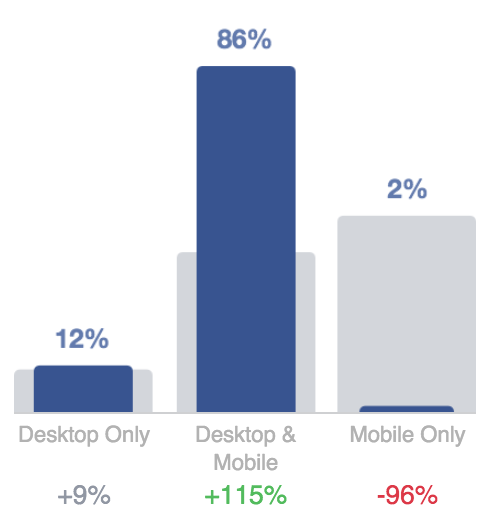
If they are at home or office, they may be using desktop and while on the move they are using mobile. Only 2% users are mobile only. So while running my Facebook ad campaigns, I can be confident that if I target only desktop users, I will reach 98% of my audience.
Demographics of a Specific Audience
You can further check the demographics of a subset of people. I have created a separate custom audience for people who have subscribed to my course.
In Facebook, while creating a custom audience, I just have to define it as people who have visited the confirmation page on my website.
Here, observe that when I am setting up custom conversions or custom audience, there is no need to deploy a unique conversion code on my success page. The Facebook Pixel takes care of it because it is tracking visitors through out the entire website. (The legacy conversion pixel will be discontinued by Facebook towards the middle of 2016).
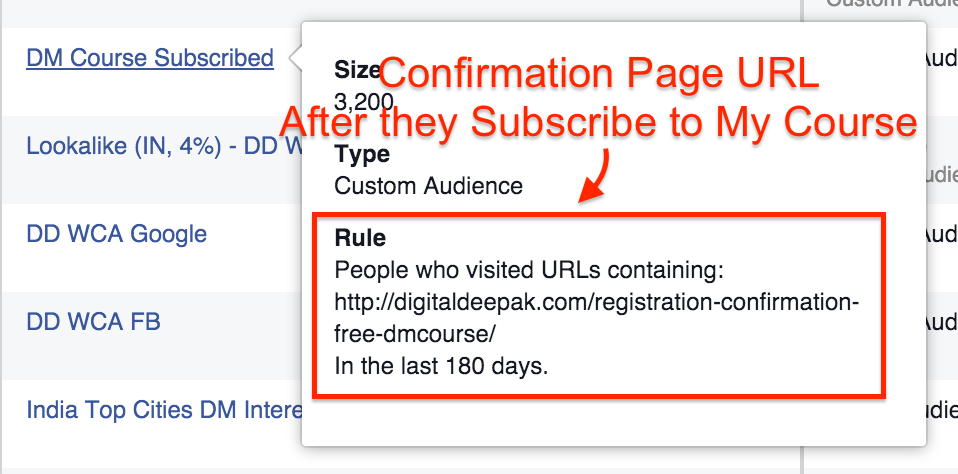
You can see that I have 3,200 people who have subscribed to my course who are also tagged on Facebook. This means that 3,200 people who subscribed to my course, who confirmed their email and visited the confirmation page, did that while they were logged into Facebook!
Now I can check the demographics of just the people who subscribed to my course:
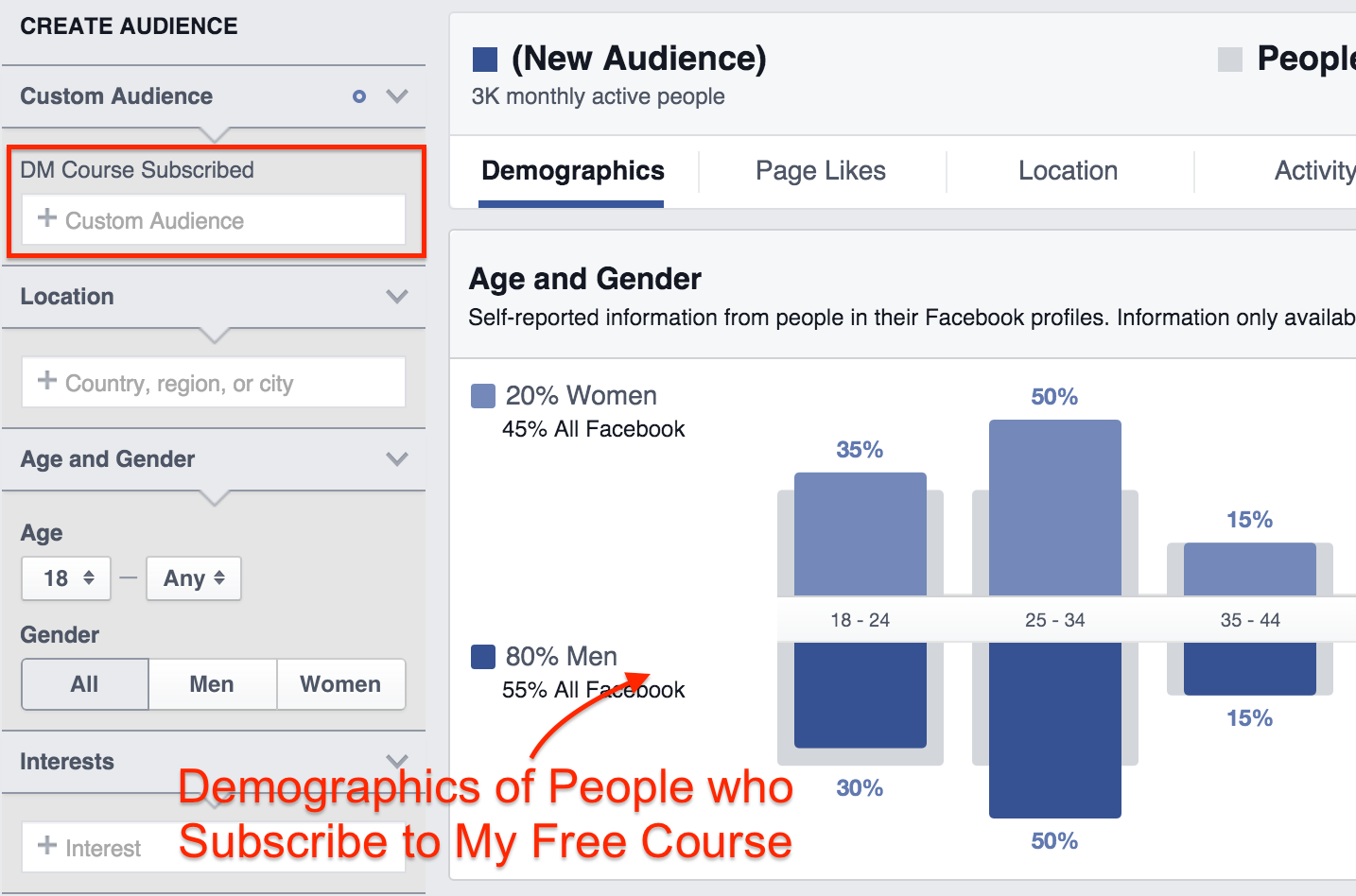
You can see that it is a bit different from my website visitors. I can infer that lesser % of woman are subscribing to my course, and there are no subscribers to my course who are above age 45!
Side note: Concerned about Privacy as a User? Use Facebook sparingly, in a separate browser, and always log out! Else marketers like me will tag you! 🙂
Conclusion
Use Facebook’s Audience Insights and Google Analytics to get the maximum info about your users. Google analytics has some info that Facebook doesn’t have.
Creating custom audiences not just helps you with demographic data. You can also use custom audiences to retarget your website visitors on Facebook or create lookalike audieces. Every can be done with just one code installed on your website – the Facebook Pixel!
Any questions?